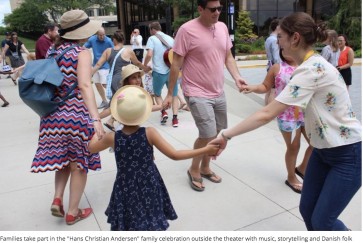EVANSTON - Pairing early childhood education for low-income children with career training for their parents in a single program has the potential to break the cycle of poverty, according to Northwestern University researchers.
Lindsay Chase-Lansdale, director of the Northwestern University Two-Generation Research Initiative, and her Northwestern colleagues, are studying the effects of a model two-generation program called CareerAdvance®, which is provided by the Community Action Project (CAP) of Tulsa County, Oklahoma.
This is the first study to examine the impact of the two-generation education and training program for parents and children. One year into the three-year study, the researchers report promising early evidence that simultaneously targeting both parents and children with education interventions increases success rates for both.
“Parents want the best for their children, and CareerAdvance® can help parents realize that doing more for themselves — advancing their own education — also helps their children,” said Chase-Lansdale, the Frances Willard Professor of Human Development and Social Policy.
CareerAdvance® links intensive, high-quality education, job training and career-building programs for low-income parents with early childhood education services for their young children.
The researchers are tracking three key indicators — parents’ education and employment, parents’ psychological wellbeing and children’s attendance among approximately 250 Head Start children and their parents, half of whom participated in CareerAdvance®, while the other half are a matched-comparison group, receiving Head Start services only.
Based on analyses of administrative data and surveys, initial findings suggest that CareerAdvance® participants had a higher commitment to work and career, higher sense of self-efficacy — or ability to achieve their goals — and were more optimistic than parents in the comparison group.
After one year, 61 percent of CareerAdvance® participants attained a career certificate compared to 3 percent of parents in the comparison group, and 49 percent of program parents were employed in the healthcare sector, compared to 31 percent.
The CareerAdvance® program offers low-income mothers career training in nursing and other in-demand health care fields as well as coaching and support.
The parents progress through the program in small learning groups of about 15 students, who serve as support networks and motivators. In addition to job training, parents learn financial skills, resume writing and interview skills. Participants who meet required benchmarks earn cash bonuses totaling approximately $1800 annually.
Study after study has shown that low-income children with access to high-quality early education do much better than their counterparts. Yet, workforce development programs have a less successful track record.
“By combining the two and embedding career training, post secondary classes and support services for the parents within the Head Start program, the two-generation approach capitalizes on the parents’ dedication to their children,” Chase-Lansdale said.
“Importantly, these educational benefits to parents and children from disadvantaged households may compound over generations and help families become more upwardly mobile and promote economic self-sufficiency,” added Teresa Eckrich Sommer, co-director of the Two Generation Research Initiative and research associate professor at Northwestern’s Institute for Policy Research.
By combining the two and embedding career training, post secondary classes and support services for the parents within the Head Start program, the two-generation approach capitalizes on the parents’ dedication to their children”
professor
Pairing the two programs also has benefits for the children. Compared to the matched comparison group, the Head Start attendance rate was 3 percentage points higher for children in the CareerAdvance® program, and chronic absenteeism was 17 percentage points lower.
“Previous research has shown that CAP-Tulsa’s Head Start program alone has large benefits for children,” said Terri Sabol, assistant professor of human development and social policy at Northwestern. “We are the first to examine the impact of CAP-Tulsa’s two-generation model. What’s truly impressive about these findings is that all are above and beyond the benefits of CAP-Tulsa’s Head Start impacts, which is a very high bar.”
Historically, federal programs have promoted the economic wellbeing of low-income families by targeting either the children or the parents. Results have been mixed.
While early childhood education is widely touted as a powerful tool in the War on Poverty, these programs are not enough to eliminate poverty. Approximately 15 million children in the U.S. live below the federal poverty threshold, and 70 percent of people born into lower income households never make it to the middle class.
Frustration with the limited impact of anti-poverty programs may be contributing to increasing investments in the two-generation approach. Still, further empirical evidence is needed.
“It is compelling to see so much momentum around two-generation practice and policy,” said Sommer, who recently presented initial findings at Ascend at the Aspen Institute’s 2Gen Practice Institute conference in Tulsa. “Yet, research evidence lags behind so we plan to keep studying the longer-term effects of the program, especially on children’s development and academic achievement, and the payoffs to such public investments over time.”
The research is supported by the Administration for Children and Families in the U.S. Department of Health and Human Services, the Foundation for Child Development, the W. K. Kellogg Foundation and Ascend at the Aspen Institute.

